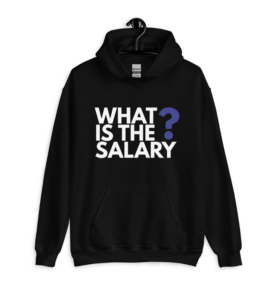
In the Berkshire region of Massachusetts and neighboring Columbia County in New York, arts and culture workers face a familiar struggle: making ends meet in a sector known for passion but not always for fair compensation. This challenge is particularly true for entry- or mid-level workers, people of color, and other identity groups who have historically experienced oppression. These workers need to be supported, as they stabilize institutions and nourish culture building and creative expression more broadly.
Recognizing these challenges, six arts and culture institutions taking part in an Inclusive Leadership Cohort convened by Multicultural BRIDGE identified pay equity as a priority. They launched the Berkshire/Columbia Counties Pay Equity Project to document workers’ experiences and commit to organizational and collective systemic changes. Following the release of its initial data and recommendations in 2023, the coalition has grown to 18 organizations and has become part of a broader national pay equity conversation.
Though this effort is still in its early days, a follow-on report published in September 2024 emphasizes how small changes in pursuit of pay equity can create ripple effects on staff morale, organizational culture, retention, recruitment, and even productivity and program quality.
Small Steps toward Equity
Addressing structural barriers identified by workers, especially in housing and healthcare, is also required.
As the report shows, evidence is accumulating that arts and culture organizations of all sizes can move toward equity without breaking the bank. Likewise, those changes can be meaningful for individuals, organizations, and the sector.
This theme shows up in the anonymous survey responses cited in the report. For instance, one worker remarked that their employer’s pay equity initiative “affords me a trust and comfort that allows me to focus on my work and the plans that the organization has in regard to its mission instead of working two or three other jobs on top of this one” (6).
Sixty-one percent of surveyed workers reported meaningful improvements to their cash and non-cash compensation (6). At the same time, pay equity remains an urgent priority. Thirty-one percent of respondents reported that their total compensation did not improve and, in some cases, declined. Several cited measures that could appear to be improvements, but respondents felt they were not (6), including:
- Ad hoc bonuses given in place of permanent raises
- Cost-of-living increases that were less than the rate of inflation
- Conforming to state-mandated minimum wage rates
- Nominal raises that still fall well short of living wages
Employers acknowledged that while progress is being made, more work remains. For example, one respondent noted that their institution’s goal was “to get our minimum pay rate up to $20 per hour” (11). This same respondent conceded that raising the minimum pay rate is just a beginning but stated the process is already making a difference in morale and teamwork in our organization. “We all know we are not being paid what we are worth, but we all know we are working together to build something that will create enough income to support higher salaries,” the employer said (11).
A survey of the 19 employers included in the 2024 report showed 39 different pay equity initiatives launched in the previous year—some with significant budget implications and some with none. The initiatives range from wage increases that exceed legal minimums, cost-of-living adjustments (COLAs) that match real inflation rates, transparent plans to get to living wages, new insurance offerings that are less expensive for the employer and employees, transparent and uniform salary bands, and expanded and more flexible paid time off.
Communities of color…face burnout in systems that keep staff of color exhausted, disconnected, and distracted.
Underlying these efforts is the knowledge that while organizational pay equity initiatives can help, changing broader policy and addressing structural barriers identified by workers, especially in housing and healthcare, is also required. Fortunately, some states are taking steps in that direction.
For example, Massachusetts Governor Maury Healey (D) signed the Frances Perkins Workplace Equity Act (H 4109) into law on August 6, 2024. This legislation requires employers with more than 25 employees to report on racial and gender pay equity gaps as a potential tool to narrow those gaps over time.
National Nonprofit Data
The challenges faced in Berkshire and Columbia Counties reflect a national issue. According to the report, Financial Insecurity in the Nonprofit Workforce, from Independent Sector and United for ALICE (Asset Limited, Income Constrained, Employed):
Sign up for our free newsletters
Subscribe to NPQ's newsletters to have our top stories delivered directly to your inbox.
By signing up, you agree to our privacy policy and terms of use, and to receive messages from NPQ and our partners.
- Arts workers earn less: Overall, 22 percent of nonprofit sector workers have wages below the ALICE threshold, but for “Arts and Recreation” employees, that number is higher at 32 percent.
- Race matters: An estimated 34 percent of Latinx workers and 35 percent of Black workers are below the ALICE threshold, compared to 17 percent of White workers
- Ability matters: One in three nonprofit workers with disabilities (33 percent) fall below the ALICE threshold.
- Age matters: While 17 percent of nonprofit workers between 45 and 64 years old earn less than the ALICE threshold, 37 percent of workers under the age of 25 fall below that standard.
- Class matters: Only 3 percent of nonprofit chief executives and 12 percent of nonprofit managers earn less than the ALICE threshold, but 34 percent of non-managerial nonprofit workers fall below that standard.
The Pay Equity Project shared its findings at two national conferences—the Association of Performing Arts Professionals and the Theatre Communications Group. Audience members immediately connected with the existential struggles and the need for comprehensive changes.
A National Coalition Grows
National organizations like the Arts Administrators of Color Network (AAC) are also organizing to address pay equity. Founded in 2016 by Quanice Floyd and Ariel Shelton, AAC began as a grassroots Facebook group and has grown into a 501c3 nonprofit with over 3,500 engaged members.

Communities of color are often committed to giving time and effort to the arts, but—as noted in the data above—face disproportionate burnout in systems that keep staff of color exhausted, disconnected, and distracted. To create real change, AAC seeks to unite members in solidarity across the ecosystem.
AAC provides networking opportunities, community building resources, and professional development and mentorship programs designed for artists and arts administrators of color facing structural barriers. During the pandemic, AAC’s emergency fund delivered 1,000 micro-grants to BIPOC artists and arts administrators in need.
Through media campaigns like #WeDoExist and WHAT IS THE SALARY?, AAC advocates for visibility for people of color working in the arts, who often go overlooked, and pay transparency efforts like the Frances Perkins Workplace Equity Act. Its annual convening has grown from 75 attendees in 2017 to over 500 in 2020, with in-person attendance now averaging 300 attendees.
The rapid growth of AAC’s networks at a time when the organization was entirely volunteer-run is itself evidence of a need for support and structural change. AAC now maintains a mailing list of over 16,000 artists and arts administrators.
Scaling Up
[Pay equity] leads to organizational effectiveness, artistic expression that inspires, and a vital creative economy.Today, as AAC works to more fully align with network values—which include compensating artists and arts administrators for their time and expertise—it faces the same challenges that so many individual nonprofits face regarding how to secure funding to compensate people equitably and sustain itself. It wasn’t until MacKenzie Scott gave AAC a 2021 grant that the group was able to begin institutionalizing its work. It began hiring its first professional staff the following year.
AAC was able to begin conducting national research after securing funding by the Wallace Foundation to identify key policy issues for US artists and arts administrators from the global majority. Mirroring some priorities identified by the Berkshire/Columbia Counties Pay Equity Project, the study will explore affordable housing, Medicare for All, cultural funding, tax fairness, and universal basic income—issues that could transform the arts sector. The findings will guide the development of a national advocacy agenda that centers AAC community members.
Pay equity remains a challenge. The resources exist for systemic change, but achieving that change in practice requires coalition building. Funders can also help by sharing more assets with organizations working directly with artists, and by investing in the administrative work it takes to make services to arts communities possible. Such a shift is intrinsically valuable for arts and culture workers struggling to survive. It also leads to greater organizational effectiveness, artistic expression that inspires, and a vital creative economy.
As a recent NPQ article notes, art can be the cure—it can help us heal our divides and connect with each other. But art also requires financial support that can sustain all art creators, regardless of race, gender, or other individual identities. The bottom line: when arts workers achieve pay equity, everyone benefits.











